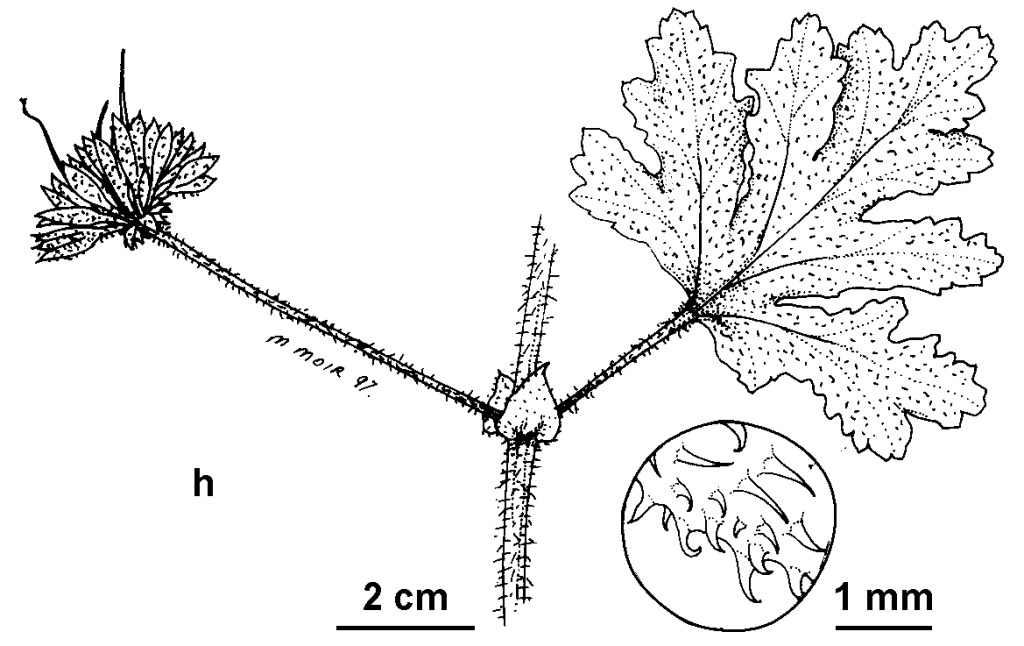Pelargonium ×asperum
Ehrh.ex.Willd. Rose-oil GeraniumSpreading, aromatic, soft-wooded shrub to 1 m high; stems, peduncles and pedicels hirsute with rather coarse eglandular hairs and shorter glandular hairs. Leaves opposite or branch-opposed; lamina broadly ovate, deltoid or c. orbicular in outline, 4–7 cm long and wide, deeply ternately dissected or palmatisect, with 3–7 toothed or lobed segments, scabrid-pubescent with coarse, curved antrorse hairs, including sessile glands on lower surface, margins recurved; petioles 1–6 cm long. Umbels 5–10-flowered; peduncle 2–6 cm long; pedicels 1–8 mm long; sepals elliptic, 6–9 mm long, obtuse to acute, apiculate, hirsute; sepal spur 2–4 mm long; petals obovate, 10–14 mm long, pink, the larger pair streaked or blotched crimson. Fertile stamens usually 6. Fruit 15–20 mm long (rarely produced); mericarps hirsute. Flowers Sep.–Jan.
GleP, VVP, GipP, OtP, Gold, CVU, GGr, HSF. Also naturalised WA, SA, Qld, NSW, Tas. Native to South Africa. Commonly grown for its aromatic foliage (the source of geranium oil of perfumery) and occasionally spreading from cultivation or establishing from discarded garden waste. Recorded from e.g. Casterton, Cherrypool, Brisbane Ranges, Frankston, Highett.
A hybrid between Pelargonium graveolens L’Hér. and Pelargonium radens H.E. Moore.
Smith, L.P.; Walsh, N.G. (1999). Pelargonium. In: Walsh, N.G.; Entwisle, T.J., Flora of Victoria Vol. 4, Cornaceae to Asteraceae, pp. 233–236. Inkata Press, Melbourne.
 Spinning
Spinning